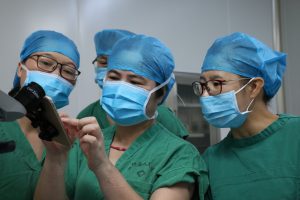Join the Leading Global Eye Health Alliance.
Membership-
Choose an alternate language here
Globally, blindness disproportionately impacts women. Women are 1.3 times more likely to be blind or vision impaired than men, and the blindness rate for women is 8% higher than their male counterparts. While existing health strategies take care of regional differences in eye care, the gender gap in eye health deserves more attention. Attention has to be paid to the barriers to eye care services for elderly women, women in general and girls.
The Fred Hollows Foundation in China has been working to improve women’s access to eye care services to minimize the gender gap. Our work includes:

To raise awareness and build the gender equitable eye health capacity of local project partners, we have developed a “Gender Equitable Eye Health Training Guide”. The Foundation also considers local context in the Guide. The guide is now widely used by eye health care workers, staff of women’s federations, project management staff, staff who do eye health training for community eye health workers, school teachers and women community leaders at primary level. The guide aims to bridge gender barriers and improve understanding of the issue; while discussing and exploring strategies to remove the barriers. The manual covers the concept of gender, gender stereotyping, gender and eye health, impacts of stereotyping on accessibility for women and girls, and possible strategies to improve gender equity.
The Fred Hollows Foundation implements gender equity strategies in different project provinces. The programme includes:-
Together with the project partners, The Foundation will continue to explore strategies to increase women’s access to eye health services in all the project provinces. We believe all women and girls deserve to have good eye health and quality of life.